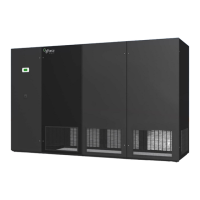10
2.7 Piping
When piping, use copper tubing with appropriate supporting devices (supporting saddles, etc.). All eld
piping must be installed according to local codes. Avoid piping runs through noise-sensitive areas,
such as oce walls and conference rooms. Refer to Section 9.0 - Piping for piping guidelines and to
the ASHRAE Refrigeration Handbook for general, good-practice refrigeration piping.
All piping below the elevated oor must be located so that it does not restrict airow. Plan the piping
layout under the raised oor to prevent the airow from being blocked. When installing piping on the
suboor, it is recommended that the pipes be mounted in a horizontal plane rather than stacked one
above the other. Whenever possible, the pipes should be run parallel to the airow.
Ensure that the tubing surfaces to be brazed are clean and that all burrs have been removed from
the ends of the tubes. Ensure that all loose material has been cleaned from inside the tubing before
brazing. Keep piping clean and dry, especially on units with R-410A refrigerant.
The units may be ordered with top or bottom connections.
2.7.1 Air Cooled Unit Piping
Refer to the attached RECOMMENDED LINE SIZING charts in section 2.7.5 for a guideline for sizing
refrigerant lines. The ultimate responsibility for line size selection is that of the installing contractor or
design engineer. Data Aire does not assume this responsibility. The chart covers distances up to 200
equivalent feet (61 m). For installations beyond this distance, consult ASHRAE or similar references.
Note: Standard piping practice must be used to ensure proper oil return and ecient
operation. The interconnecting lines to the remote air cooled condenser or condensing
unit must be installed by a qualied refrigeration mechanic.
2.7.2 Discharge Lines
Discharge lines, also called hot gas lines, should be trapped at the top (inverted) and bottom as well
as every 15 to 20 feet (4.6 to 6.1 m) of vertical rise. Discharge check valves are required on all
installations, especially those where there are long pipe runs or cold climates. For air-cooled units built
after 3/14/2017, the discharge check valves are already installed inside the evaporator section and do
not need to be installed external to the unit. For units built before this date, the check valves must be
eld supplied and installed externally to the evaporator section. If there is doubt as to whether or not
the check valve is already installed in the unit, look for it on the hot gas line close to the exit point of the
unit (see example picture below). The externally installed check valve should be placed from six (6) to
ten (10) feet (1.8 to 3.1 m) from the compressor.
The check valve will prevent ow from the condenser to the compressor during the “o” cycle.
Indoor unit ships with a nitrogen holding charge. Do not vent the evaporator until all refrigerant piping is
in place, ready for connection to the unit and condenser. The discharge, suction and liquid lines need
to be refrigerant grade copper and in accordance with local code. All refrigeration piping should be
installed with high temperature brazed joints. When brazing, a supply of nitrogen gas needs to be fed
through the refrigerant lines. Be sure to open the other end of the refrigerant line to allow the nitrogen
to bleed o and not pressurize the piping. Prevailing good refrigeration practices should be employed
for piping support, leak testing, dehydration and charging the refrigerant circuits. During the installation
the lines should be capped o and lled with dry nitrogen at the end of each day’s work or until the
system is completed and sealed.
Data Aire recommends a silver/phosphorus/copper alloy with 5 to 15% silver be used to braze the
refrigerant line sets to the indoor and outdoor units. Nitrogen needs to be owing through the lines to
eliminate carbon deposit build-up on the inside of the joints. Carbon could contaminate the refrigerant

